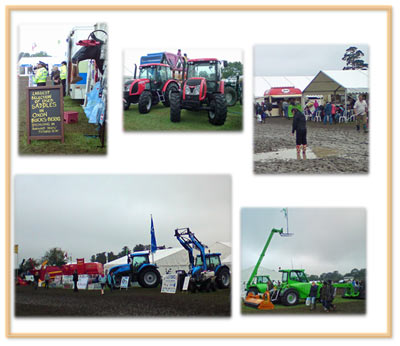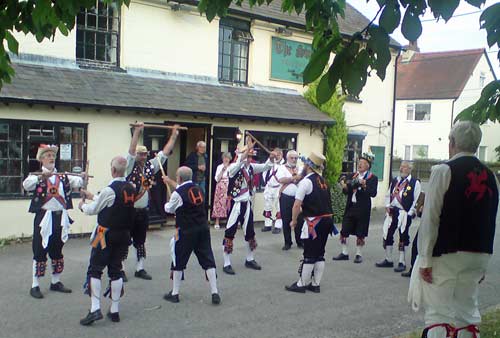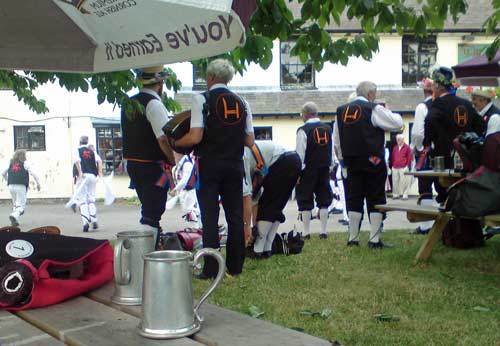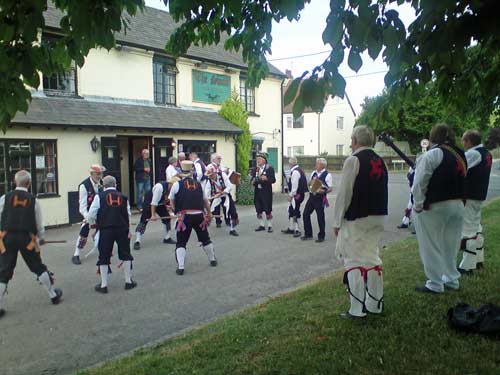Just like buses — you wait for a programme on German art for ages then a whole series comes along on BBC4, which started last night. This should be fertile material for anyone writing about a character who’s a German artist.
Part of the press release for the programme hints at an underlying reason why German culture is less known outside German-speaking countries than it deserves to be. The presenter, Andrew Graham-Dixon said in a press release ‘Following two World Wars, there is a tendency to deny German culture the equal reverence of Italy or France, and this enlightening new series provides a wonderful opportunity to explore a great, yet often neglected, artistic tradition whose influence has been just as profound.’
BBC Four controller Richard Klein added: ‘Germany is beautiful and has a rich and luminous cultural heritage, but it is virtually unknown over here, or simply misunderstood.’
I caught the second half of the programme and recorded it so will return to watch the rest and found that even the section I saw was quite fascinating in terms of explaining the German character. There were plenty of shots of green plains, forests and Alpine meadows which illustrates the German love of the outdoors — despite some very urbanised areas (such as Berlin and the Ruhr) many German cities (like Hanover, Munich and Stuttgart) have large areas of forest or parkland close to their centres.
Whereas the English love of the rural idyll tends to be a romantic aspiration (with suburbs being invested with rural decoration) the Germans are, perhaps, more practical. They might be happy to live in apartments in the city most of the time but many of them love to get out into the countryside in practical terms.
I’ve experienced this several times. I once went for an overnight business meeting at a very rustic lodge hotel in the middle of a forest by a huge lake called the Steinhuder Meer. The manager, who lived in Frankfurt, who organised it always stayed in the middle of the forest rather than in the centre of Hanover, where the office was, about 40km away.
I’ve also been taken on long walks up hills with German colleagues and, in one very memorable event, walked up through an Alpine forest when we stayed in a ski resort in the summer to a ski lodge at the top of a mountain where we were all plied with schnapps and cold cheese and meats — and one of my English colleagues got so drunk she was ill the whole of the next day.
When I workshopped the last extract of the novel people were wondering about Kim’s ‘German-ness’ and I also had some comments about what does she see in James and why on earth would a left-wing urban artist want to go out and live in the countryside. To my mind these two aspects are bound together — because she’s German my theory is that once she gets out into the relative wilderness (Buckinghamshire compared to Hackney and Shoreditch) that some desire to escape back to nature will be triggered. It might not last but, as someone who’s already a bit rootless, it seems a bit more plausible for her to move as a German than perhaps as a native Londoner or English suburbanite.
The back-to-nature theme is continued on BBC4 as part of a wider mini-Germany season. Tomorrow night (1st December) Julia Bradbury starts a German hiking season with a walk along the Rhine — the spectacular valley between Cologne and Frankfurt is spectacularly pretty. ‘The Germans enjoy a relationship with walking that has lasted over 200 years. The exploration of their landscape has inspired music, literature and art, and Romanticism has even helped shape the modern German nation, as Julia discovers.’
Also tomorrow, Al Murray (probably one of the very few Oxford-educated ‘pub landlords’) does one of these documentaries where we’re believed to invest more in the subject because it’s of interest to a celebrity. Given Murray’s alter-ego this series should hopefully be of great interest to my novel (what could be better than the pub landlord going to discover Germany?) — and perhaps shows that there’s maybe a latent interest in discovering about modern German characters?
The BBC website says: ‘Making fun of the Germans has had ‘Pub Landlord’ comedian Al Murray’s audiences laughing in the aisles, but behind the scenes Murray is a serious historian with a fascination for the real Germany. In this two-part documentary, Al sets out to discover the truth behind the wartime jokes and banter that still plague all things German. In a breathtaking journey through one of Germany’s coldest winters, he discovers a country of warm and welcoming people and two centuries of stunning arts and culture. From Bach to Bauhaus and the Brothers Grimm, Al falls in love with the true historical, natural and cultural beauty of this much-maligned land.’





